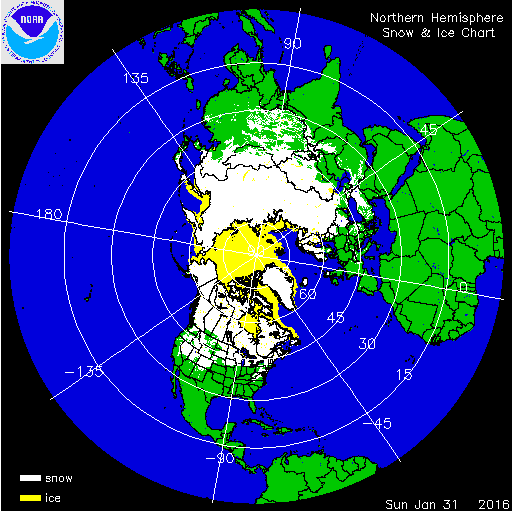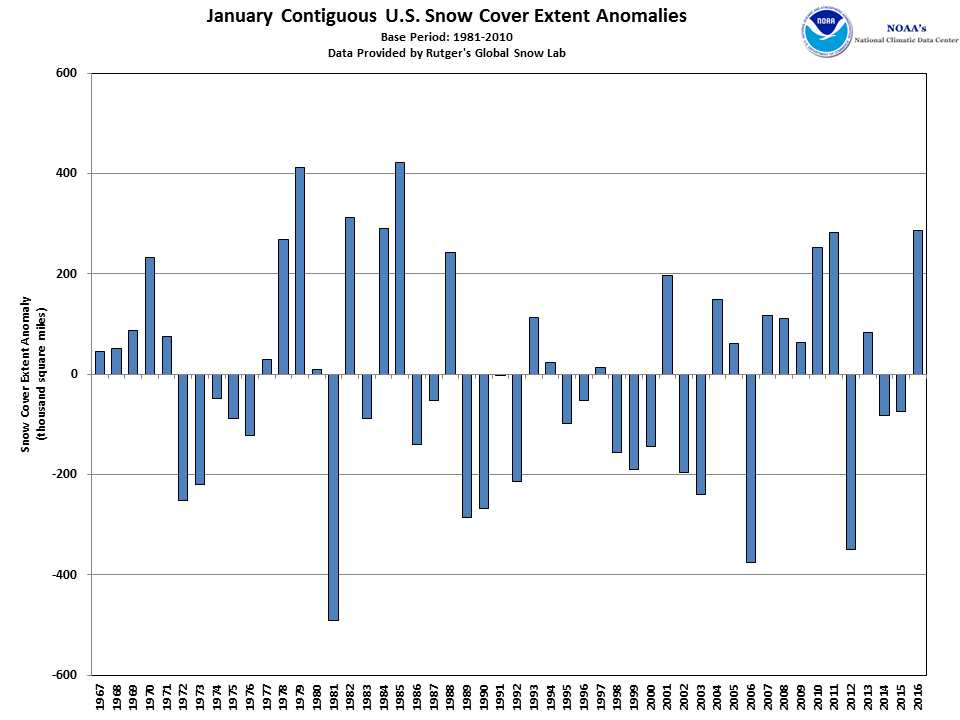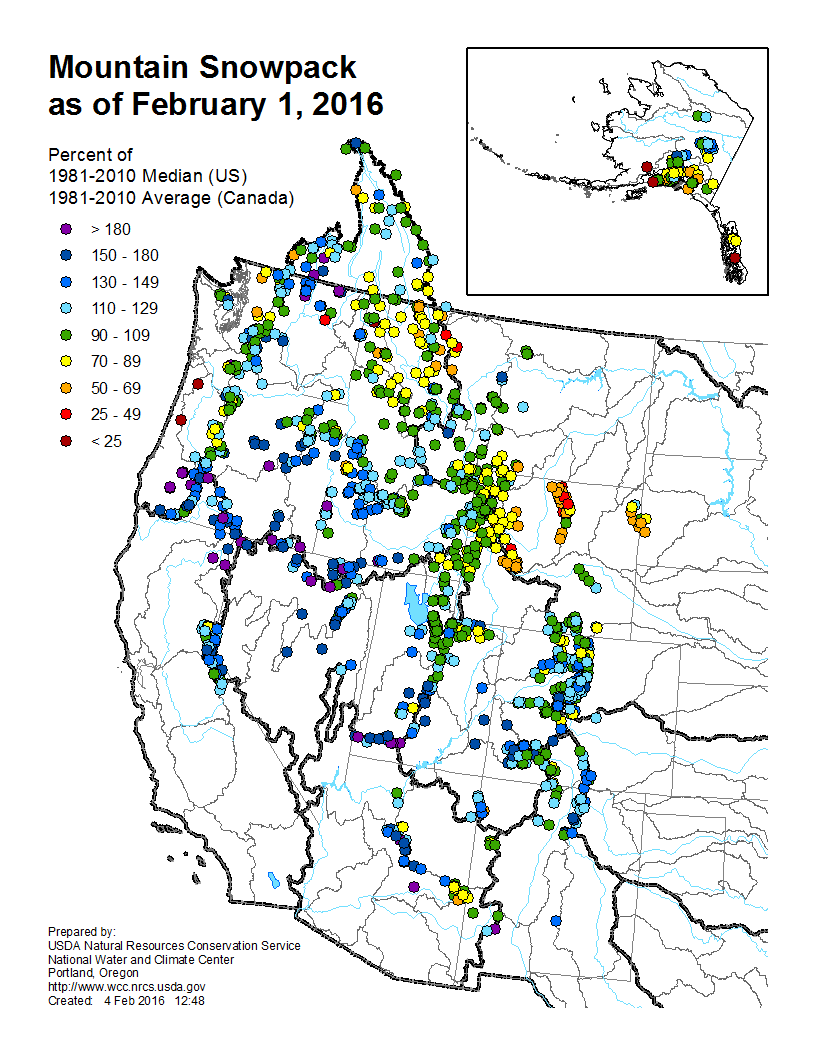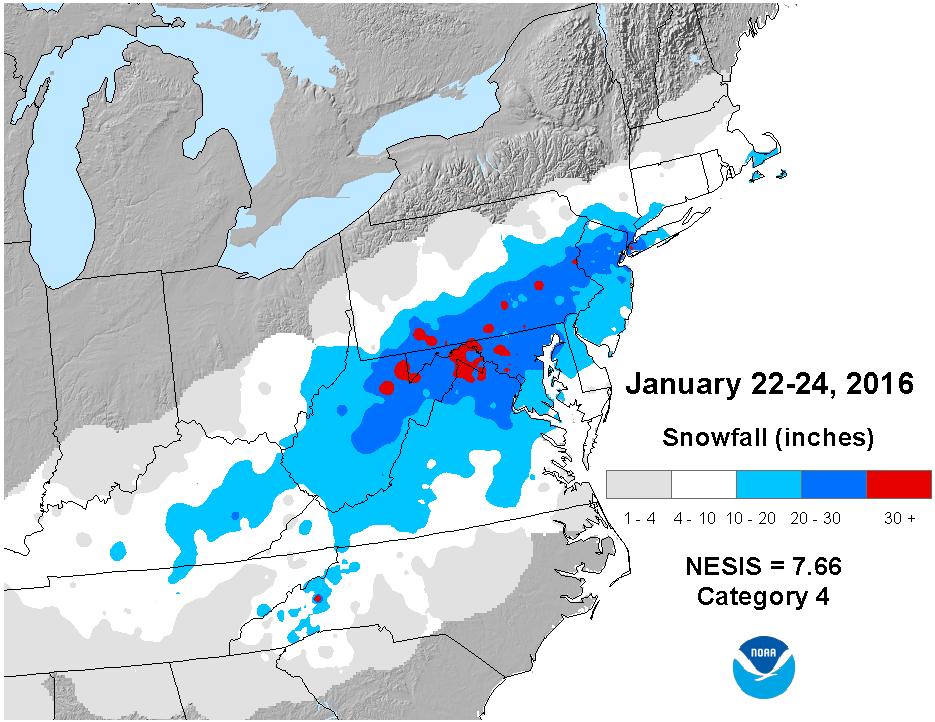During January, above-average temperatures and below-average precipitation spanned the northern U.S., while near- to below-average temperatures and above-average precipitation were observed across parts of the southern United States. Despite the relatively warm and dry month for the contiguous U.S., several winter storms impacted the West and one major winter storm impacted the East contributing to an above-average snow cover extent for the month. According to NOAA's National Snow Analysis, on January 1st, 53.7 percent of the contiguous U.S. was snow covered — much of the West, Rocky Mountains, and Great Plains, as well as the Upper Midwest and Northeast. Snow cover peaked for the month on January 11th and agaon on the 23rd with 58.2 percent of the contiguous U.S. snow covered. By the end of the month, only 34.3 percent of the Lower 48 was snow covered — high elevations in the West and parts of the Upper Midwest, Mid-Atlantic, and Northeast.
According to NOAA data analyzed by the Rutgers Global Snow Lab, the monthly snow cover across the contiguous U.S. was 1.65 million square miles, 285,700 square miles above the 1981-2010 average. This was the seventh largest January snow cover extent in the 50-year satellite record and largest since 1985. During the month, above-average snow cover was observed across the West, Northern Plains, and Northeast, with below-average snow cover in parts of the Southern Plains. The Alaska snow cover extent for the month was 1,160 square miles below average and ranked as the 13th smallest on record.
Melting of winter and spring mountain snowpack provides a crucial water source across much of the western United States. The total annual water budget for agriculture and human use in the mountainous West is highly dependent on the amount of snow melt that will occur in spring and is proportional to the amount of snow on the ground. On February 1st, above-average snowpack was observed for much of the Cascades, Central and Southern Rockies, and the Sierra Nevada Mountains. Near- to below-average snowpack was observed across the Northern Rockies. In Alaska, below-average snow pack was observed across southern parts of the state, with near- to above-average snowpack across central parts of the state.
Significant Events
A slow moving, powerful winter storm pounded the Mid-Atlantic from January 22nd-24th. More than 100 million people from Arkansas to Massachusetts were affected by the storm. The storm prompted governors from 11 states and the mayor of Washington, D.C. to declare a state of emergency. The storm paralyzed commuters as more than 13,000 flights were cancelled and travel bans were implemented in the cities of New York and Newark. The heavy snowfall broke several all-time snow storm records, see table below. The highest snowfall total for the event was atop Mount Mitchell in North Carolina, which received 66 inches of snow from January 21st through 24th, potentially setting a new state record according to the North Carolina State Climate Office. Based on the Northeast Regional Snowfall Impact Scale (NESIS), which takes into account snowfall totals on populated areas, the storm had a score of 7.66 (Category 4 or Crippling). This storm ranked as the fourth most impactful winter storm since 1950. Only winter storms in 1993, 1996, and 1960 ranked higher. The snowfall patterns and totals were similar to an event that occurred in 1996; to see more details on how these two events compare, please visit our supplemental report. Other impacts from the storm included record coastal flooding along parts of New Jersey and Delaware and blizzard strength winds that contributed to tens of thousands of power outages.
All-time snowfall records
| Location | New Record | Old Record | Date |
|---|---|---|---|
| Allentown, Pennsylvania | 31.9" | 25.9" | Jan 7-9, 1996 |
| Baltimore, Maryland | 29.2" | 26.8" | Feb 16-18, 2003 |
| Harrisburg, Pennsylvania | 30.2" | 24.2" | Jan 7-9, 1996 |
| JFK Airport, New York | 30.5" | 26.0" | Feb 16-18, 2003 |
| LaGaurdia Airport, New York | 27.9" | 25.4" | Feb 11-12, 2006 |
| Newark, New Jersey | 27.9" | 27.8" | Jan 7-8, 1996 |
 NOAA's National Centers for Environmental Information
NOAA's National Centers for Environmental Information




